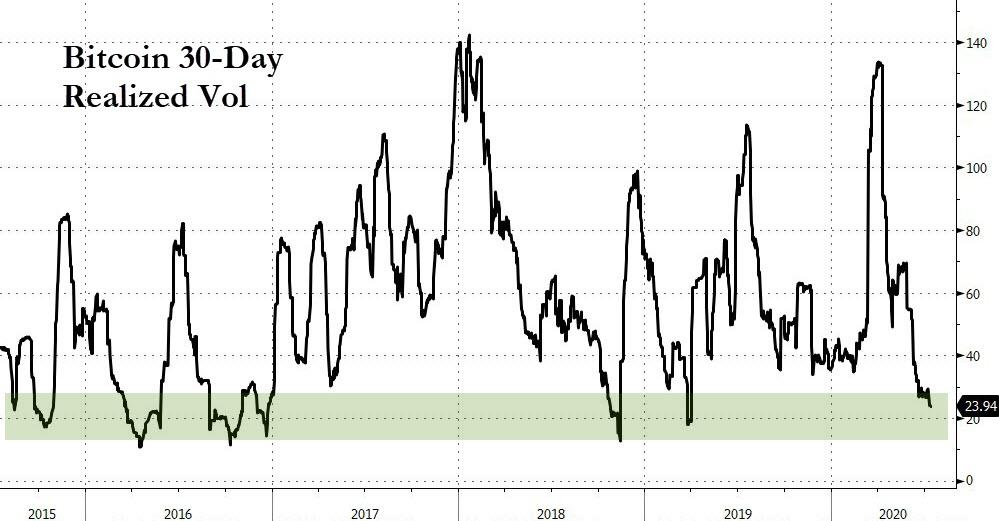Is High-Frequency Trading The Reason Bitcoin Has Become Boring?
Tyler Durden
Thu, 07/16/2020 – 14:25
Authored by Hisashi Oki via CoinTelegraph.com,
The increasing use of HFT may help explain Bitcoin’s record low volatility.
image courtesy of CoinTelegraph
The Bitcoin (BTC) market has been quiet lately. A little too quiet.
As of Tuesday Bitcoin’s volatility levels had dropped to levels unseen since 2017. In recent weeks, Bitcoin has fallen behind as investors piled into altcoins such as Chainlink (LINK) and Cardano (ADA) .
One possible explanation for Bitcoin’s consolidation may be an increased presence of high-frequency trading (HFT) firms in crypto in recent months. Speaking to Cointelegraph, Paolo Ardoino, CTO of Bitfinex explained that he believes HFT is a major reason behind Bitcoin’s low volatility.
“In crypto, we are back to the old days of HFT before it became the zero-sum game that it has become today. In crypto HFT firms can make a lot of money deploying relatively straightforward plays, such as cross-exchange arbitrage and exploiting the spread between one exchange and another.”
HFT and cryptocurrency
HFT is a trading method that uses algorithms to transact a large number of orders in fractions of a second. It has existed in the cryptocurrency space for a long time. But just as billionaire Paul Tudor Jones revealed his Bitcoin holdings recently, other institutional investors are increasingly joining the market. This may explain the greater use of HFT.
Bitfinex, which claims to be “huge for HFT in crypto”, recently revealed that between 80 percent and 90 percent of volume on Bitfinex was now generated by HFT firms. Bitfinex partnered with Market Synergy and has been offering “institutional standard cryptocurrency connectivity.”
Bitfinex concludes the growing use of HFT represents increasing “maturity in the digital asset space”. But why would Bitcoin volatility go down with increased use of HFT? Ardoino explains the increased liquidity due to the surge of HFT tradings leads to low volatility:
“As Bitcoin becomes an established asset class, we anticipate the high levels of volatility associated with cryptocurrency to recede,” he explained. “There is generally an inverse correlation between liquidity and volatility; i.e., higher liquidity tends to lead to lower price volatility.”
“The increasing presence of HFT firms in crypto seems to have added more liquidity to crypto exchanges. This provides sufficient orders for both sides of the order book and increases market efficiency, contributing to prolonged low volatility price consolidation in Bitcoin”
Bitcoin is famous for moving aggressively for a short period of time. Last year, Tom Lee of Fundstrat reminded investors that the majority of Bitcoin (BTC) gains come in the ten best trading days of the year. However, the growing presence of HFT may be changing the “rule of 10 best days” as well.
via ZeroHedge News https://ift.tt/2WpLBBp Tyler Durden

